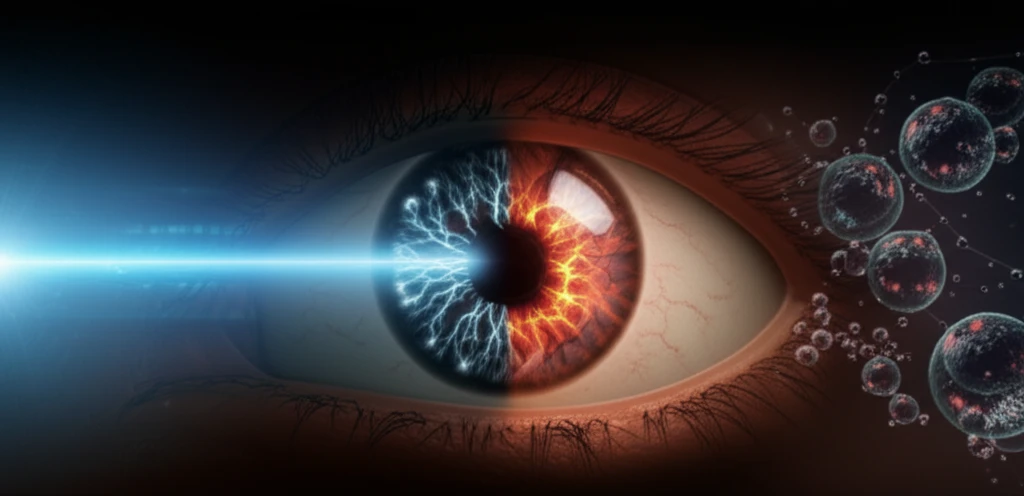
Myopic CNV Treatment: Anti-VEGF vs. PDT – Which Vision Therapy Is Best?
"Discover the latest insights into managing myopic choroidal neovascularization (mCNV) with our detailed comparison of Anti-VEGF and PDT therapies, helping you make informed decisions for optimal vision health."
Pathologic myopia, a severe form of nearsightedness, is a leading cause of choroidal neovascularization (CNV) in individuals under 50. CNV, the abnormal growth of blood vessels in the eye, can lead to significant vision loss. Myopic CNV (mCNV), specifically, is a major complication that, left untreated, can severely impair visual acuity.
Traditionally, photodynamic therapy (PDT) has been used to manage mCNV. However, with the advent of anti-vascular endothelial growth factor (VEGF) therapies, a new avenue for treatment has emerged. Anti-VEGF treatments aim to inhibit the growth of these abnormal blood vessels, reducing their impact on vision.
This article explores a detailed comparison of anti-VEGF therapy and PDT for treating myopic CNV, drawing upon recent research to provide clear, actionable insights. Whether you’re a patient, caregiver, or simply interested in vision health, understanding these options is crucial for making informed decisions.
Anti-VEGF vs. PDT: Understanding the Treatment Options for Myopic CNV

A retrospective study compared the effectiveness of anti-VEGF therapy versus photodynamic therapy (PDT) for myopic choroidal neovascularization (mCNV). The study included 42 eyes from 42 patients with mCNV, dividing them into two groups: a PDT group (20 eyes) and an anti-VEGF group (22 eyes).
- Anti-VEGF Therapy: Involves intravitreal injections of drugs like bevacizumab or ranibizumab to inhibit the growth of abnormal blood vessels.
- Photodynamic Therapy (PDT): Uses a light-activated drug (verteporfin) to destroy the abnormal blood vessels.
Choosing the Right Path for Your Vision
The decision between anti-VEGF therapy and PDT for myopic CNV should be made in consultation with your ophthalmologist. Factors such as the severity of your condition, your overall health, and the potential risks and benefits of each treatment should be carefully considered to determine the best course of action for preserving your vision.
